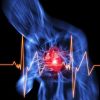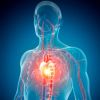-
 +1 +1
+1 +1Preventing Heart Disease | Medi-Station Urgent Care Miami
Heart disease is a silent predator that doesn’t discriminate by age, often striking without warning. It can affect both the young and the old, therefore, prevention is the key to a healthy heart. In this comprehensive guide, brought to you by Medi-Station Urgent Care, we delve into preventive measures tailored for different age groups. Whether you’re in your twenties or your golden years, understanding the unique challenges and interventions for your age can significantly impact your heart health. Read more: https://www.medistationurgentcare.com/a-comprehensive-guide-to-preventing-heart-disease-at-every-age
-
 +9 +1
+9 +1Persistent angina pectoris.
A very comprehensive article on the risks of Prinzmetal's based on 12 year study.
-
 +11 +1
+11 +1Why having a chronic condition makes you rethink your daily routine.
My cardiovascular condition is part of a wider problem, a rare genetic connective tissue disorder called Ehlers-Danlos syndrome (EDS). I have type 3. This means I don’t just have the heart problems, but also autonomic dysfunction, widespread pain, chronic fatigue, osteoarthritis in all my joints, spontaneous joint subluxing and dislocation, secondary Reynaud’s phenomenon, vascular spasm in my brain resulting in parkinsonisms, migraines and this list could go on forever so I am going to stop there.
-
 +3 +1
+3 +1Angina
Read about angina pectoris pain, treatment, symptoms, angina attacks, medication, types, causes, and more. Read about the different types of angina (printzmetal, stable, unstable, variant, acute, vasospastic, microvascular).
-
 +2 +2
+2 +2Prinzmetal’s angina
Prinzmetal’s angina is a form of chest pain, pressure, or tightness (angina) caused by spasms in the arteries that supply blood to the heart.
Submit a link
Start a discussion




















